Intro
It’s worth noting this review is based on mostly objective data. These drivers – as well as the others from the AudioFrog GB series speakers – include a LOT of installation hardware to make installs quicker and easier. I simply don’t have the time right now to really delve in to the facets of this, but I will include some of the hardware in the following pictures.




Small Signal Parameters
Results as measured via Dayton’s DATs measurement tool.
- f(s)= 1183.00 Hz
- R(e)= 2.92 Ohms
- Z(max)= 9.32 Ohms
- Q(ms)= 4.810
- Q(es)= 2.195
- Q(ts)= 1.507
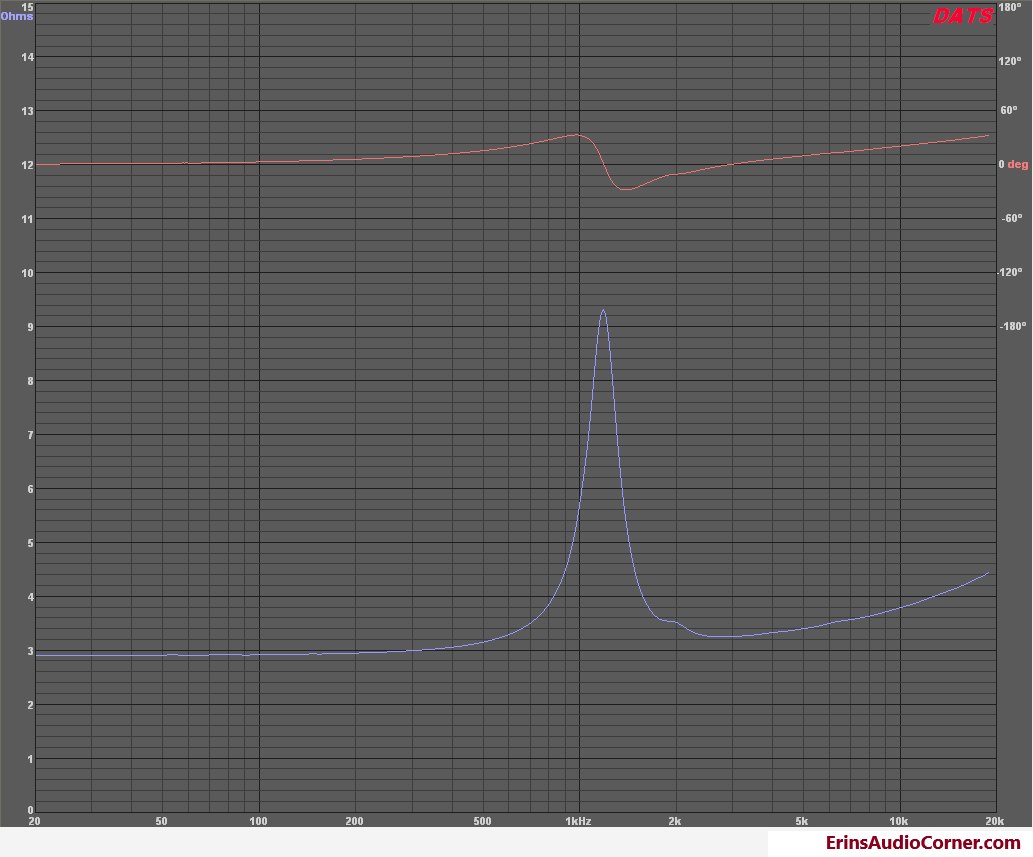
Frequency Response
Frequency Response and the following Harmonic Distortion measurements were taken using Dayton’s OmniMic measurement system. For this test, the driver was surface mounted (not flush mounted) on the baffle. The backside of the driver cutout was chamfered to allow for the driver to ‘breathe’ better, as is often recommended for such small drivers.The frequency response measurements below are on-axis (0 degrees) and off-axis (15, 30, 60 degrees), measured at 2.83v/1m.
- Black = 0 degrees
- Red = 15 degrees
- Blue = 30 degrees
- Green = 60 degrees
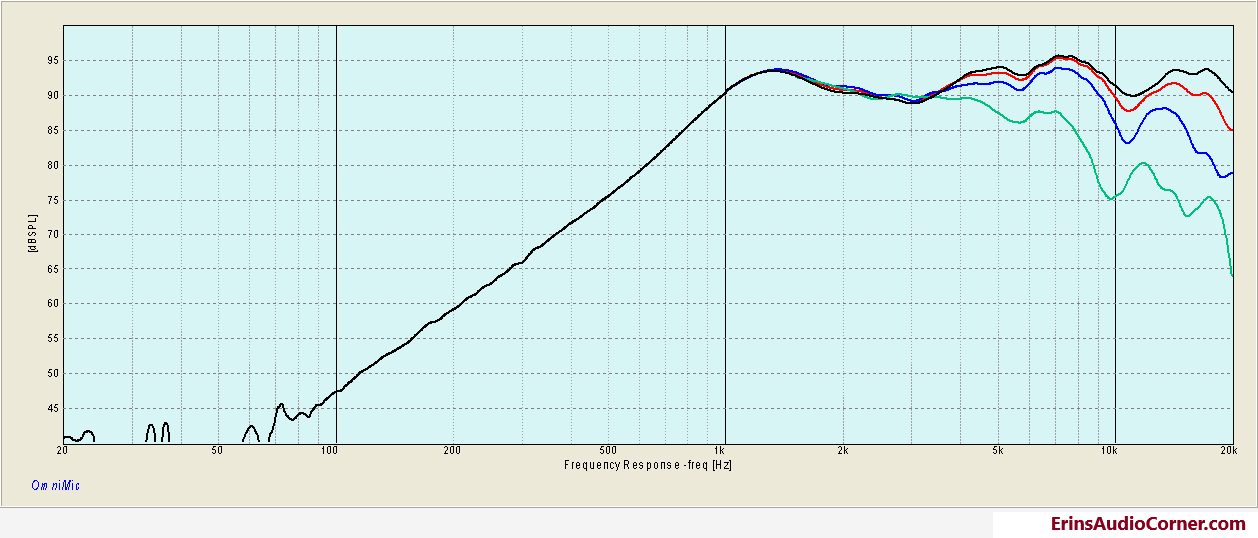
Now, normalized to show the relation of the off-axis response to the on-axis response:
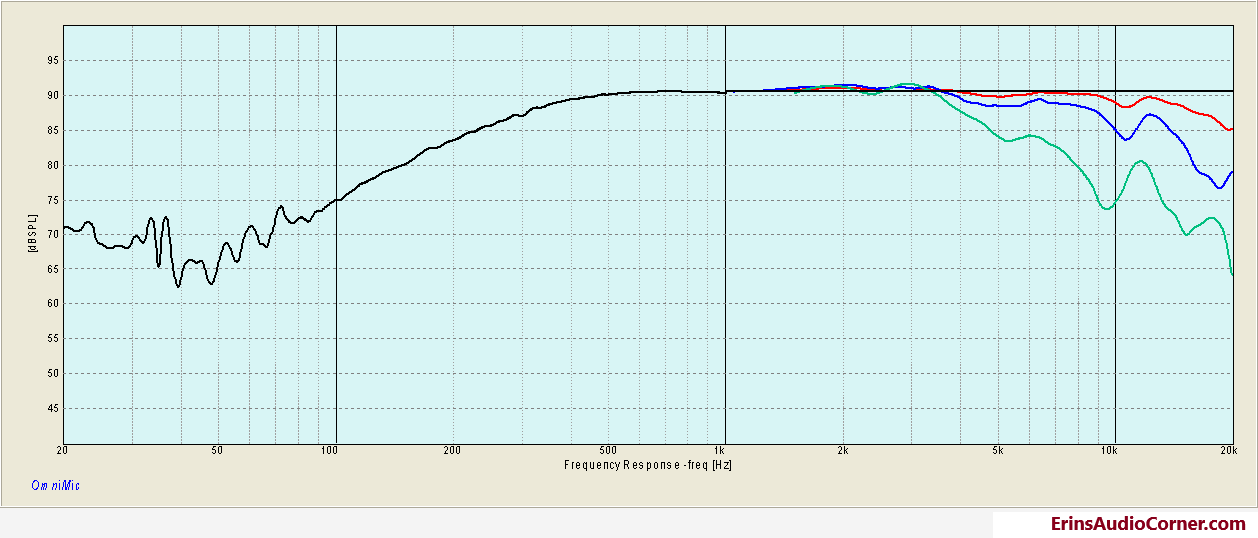
Harmonic Distortion
The following HD graphs are done in the nearfield, emulating 90dB at 1 meter as well as 96dB and 102dB at 1 meter, respectively.
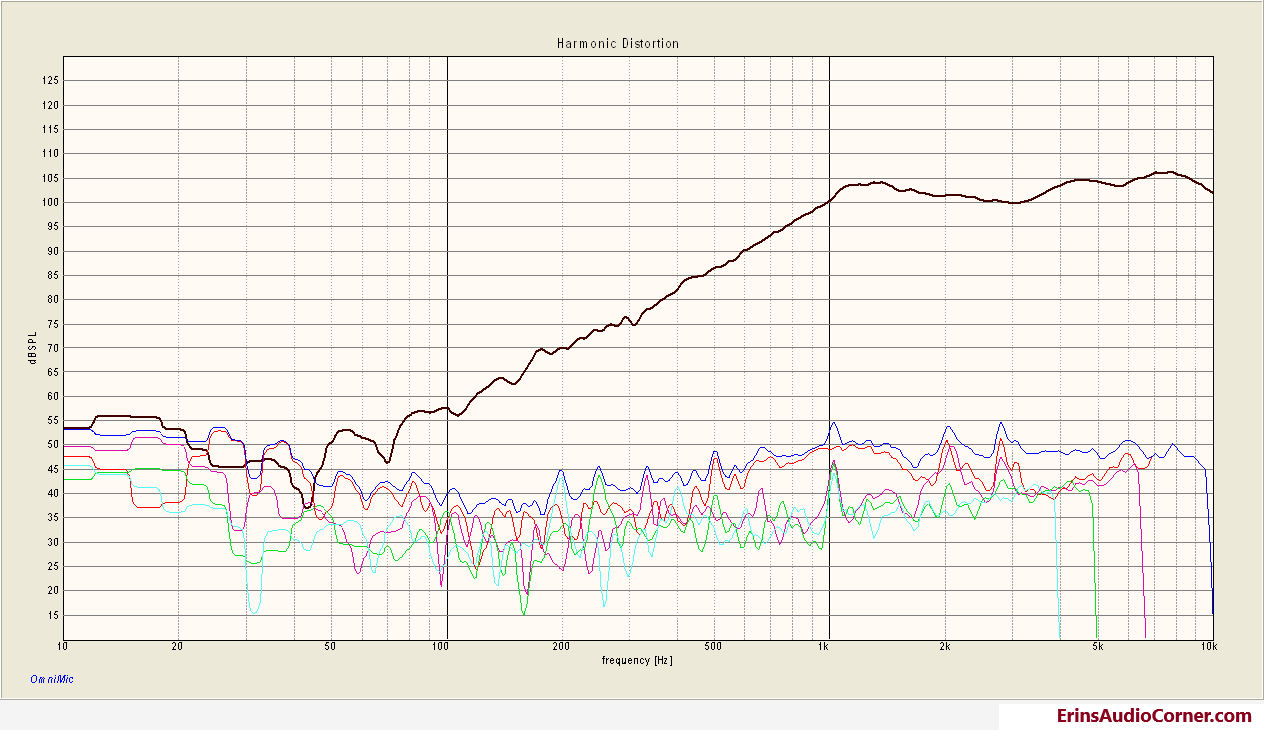
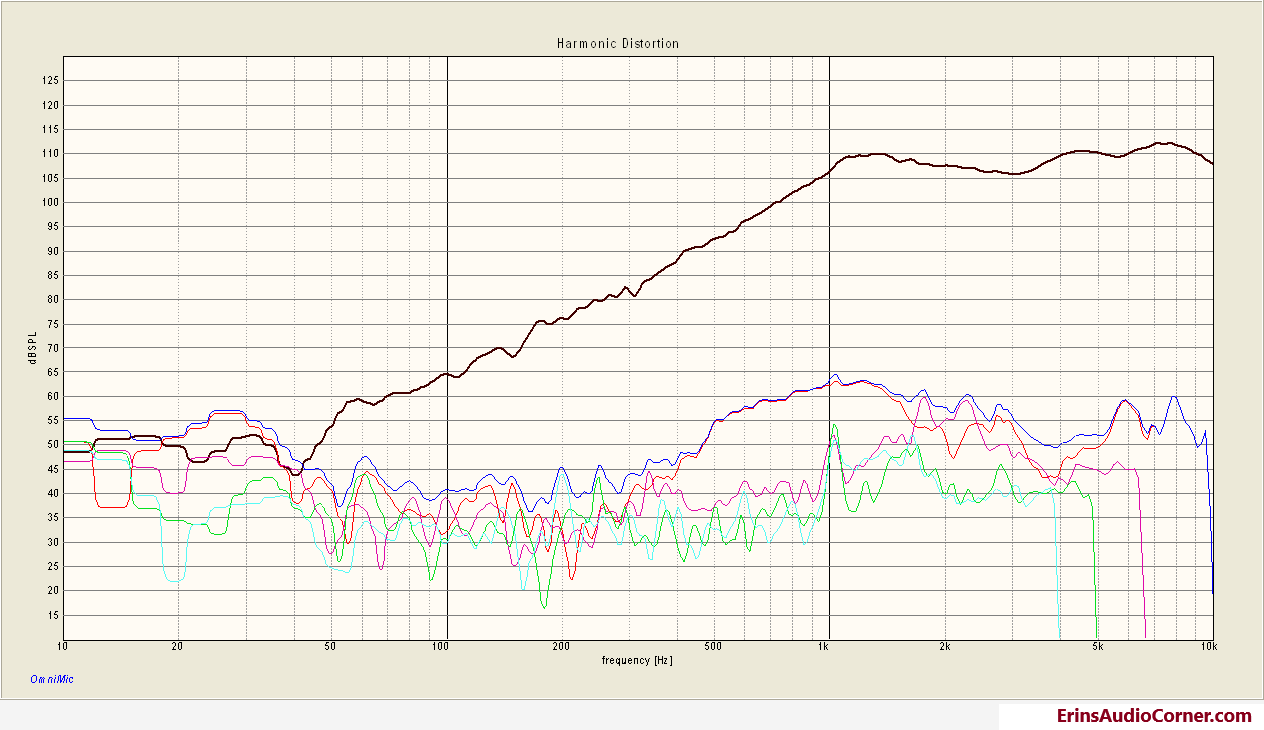
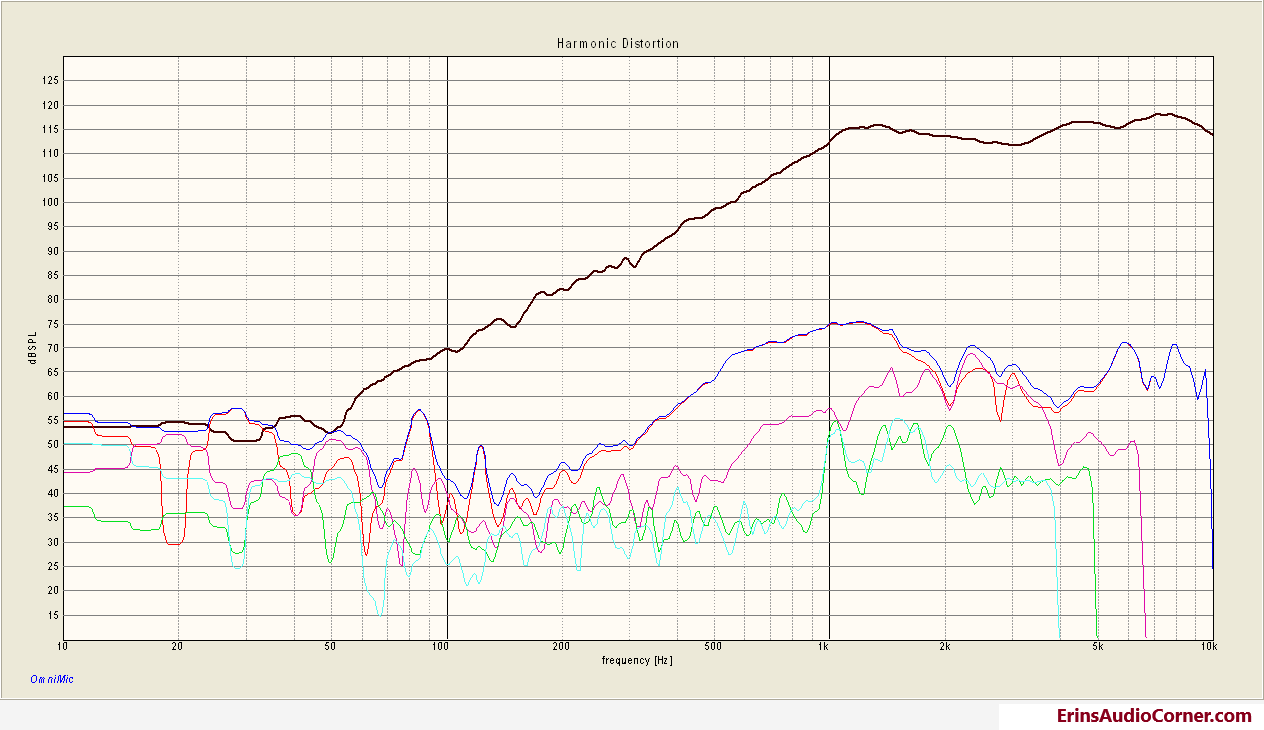
Thoughts
In terms of build quality, these are very nice. The body is made from some thick metal. There is a slew of install related optioned hardware provided (such as mounting tabs, screw ring to clamp the tweeter, removable grille that you can custom paint, etc, etc). Just extremely high build quality here.
The Fs is 1183Hz. Pairing this up with the distortion plots, it’s easier to get an idea of where an appropriate high-pass crossover point for a tweeter is. In this case, above 2khz, distortion is at about 0.50% THD at 96dB output and below 0.80% THD at 102dB output, so I’d say this is probably a safe low-frequency crossover with at least a 12dB slope. The manufacturer recommendation is ≥ 1.8kHz @ ≥ 12dB/octave.
While, to some, that may seem like a relatively high cross over point for a 1.5 inch tweeter, take a look at the average measured sensitivity above this point: 90.5dB @ 2.83v/1m. Compare that to the Gladen Aerospace 28mm tweeter I recently measured – which is only a couple millimeters smaller in each dimension – and you’ll see, while the Gladen looks like it can also take this same crossover point, that tweeter has an average sensitivity of approximately 87.5dB @ 2.83v/1m. The Gladen 28mm is just a hair more compact, by a couple millimeters in the various dimensions, but the GB15 has about 3dB higher sensitivity. So, in terms of output, I’d say the GB15 is slightly above the Gladen 28mm (no pun intended) thanks to its similarly low distortion but 3dB higher output.
That’s a lot of talk about crossover point, so let’s look at frequency response which is more important to me. You’ll notice a broad peak on the low end near resonance. Scan’s D3004/60000 has this as well, though steeper. I’m not saying it’s bad… I’m just doing some comparison against a well-liked product. There’s an off-axis dip And it’s worth pointing out here this testing was done without flush-mounting the tweeter (which is the same way I have conducted all of my tweeter tests over the past few years). As you can see the in the photo at the beginning of this review there is a pretty deep trough between the tweeter dome and the side of the housing that I believe is causing some of the combing pattern you see in the high frequency area. With that said, I prefer to look at on-axis to get an idea of the smoothness but I focus more on what happens off-axis to see how the trend behaves. Are the same bumps/dips there or do they differ quite a bit. According to my measurements the dip at ~10.5khz is due to a reflection from the dome center to the surround (this is an educated guess; doesn’t mean I’m right).
This tweeter seems prime for use in a 2-way system where you need a tweeter that can handle a lower crossover to mate up to a 6.5" (or so) midwoofer before said midwoofer is highly directive/beaming. The high-ish sensitivity is also a nice trait.
Note: After I tested and posted the results, the manufacturer replied with the following which provides some insight in to the design…
“There is ALWAYS a dip in the response of a dome tweeter that corresponds to the height of the dome above the baffle. This is probably why B&W puts their tweeter in a little pod above the box in their home speakers. The frequency of the dip corresponds to the path from the dome to the tweeter and back–it’s the result of destructive interference.
If you look carefully at the pictures, you’ll see that the tweeter is recessed in the cup and there’s a small ring that directs the sound through the grille. All of those dimensions have been designed to best compromise between the two kinds of mounting in a car–in a relatively flat baffle like the top of a door panel or a KP or without a baffle like a sail panel or an A-Pillar.
A taller dome increases the rigidity of the tweeter to help reduce modal issues. A shorter dome shifts the peak to a higher frequency. An inverted dome decreases this condition significantly, but makes the off axis response at really high frequencies pretty irregular. We opted for a tall dome and to manage the compromises with the housing, the little ring and a tall dome.”
– Andy Wehmeyer
End
If you like what you see here and want to help me keep it going, there’s a Paypal Contribute button at the bottom of each page. Just provide what you can. Every little bit is truly appreciated.
You can also join my Facebook and YouTube pages via the links at the bottom of the page if you’d like to follow along with updates.
Thanks!

